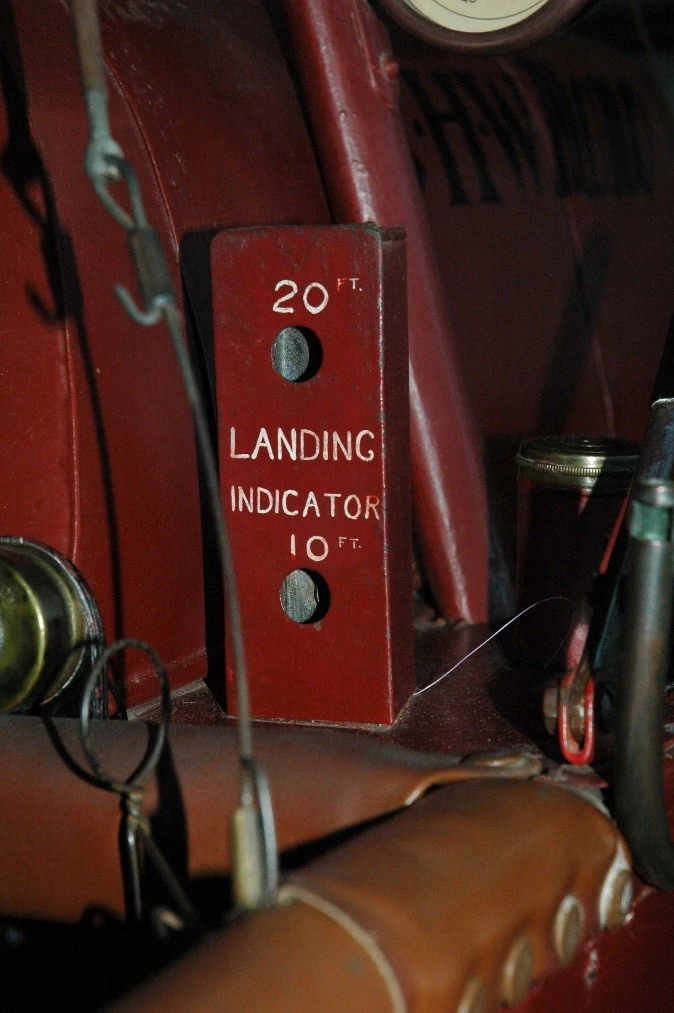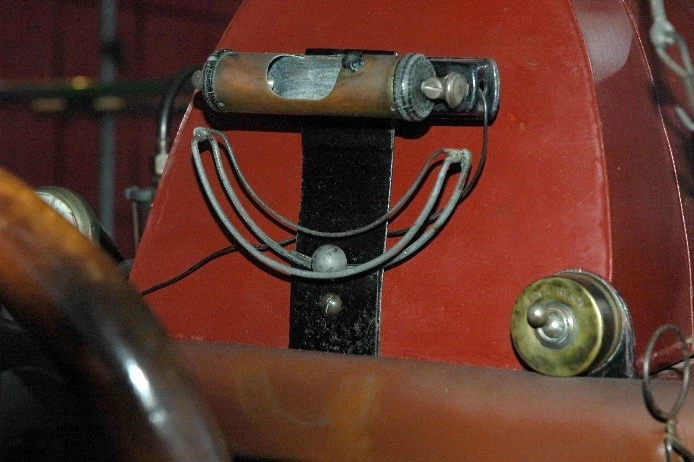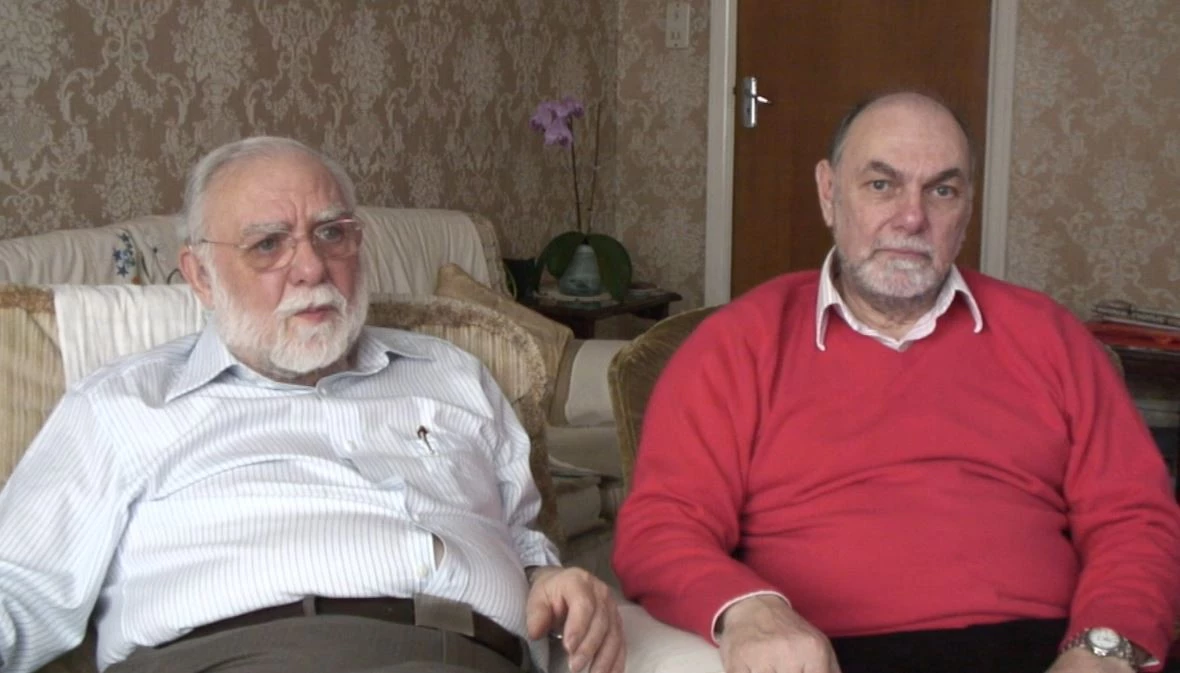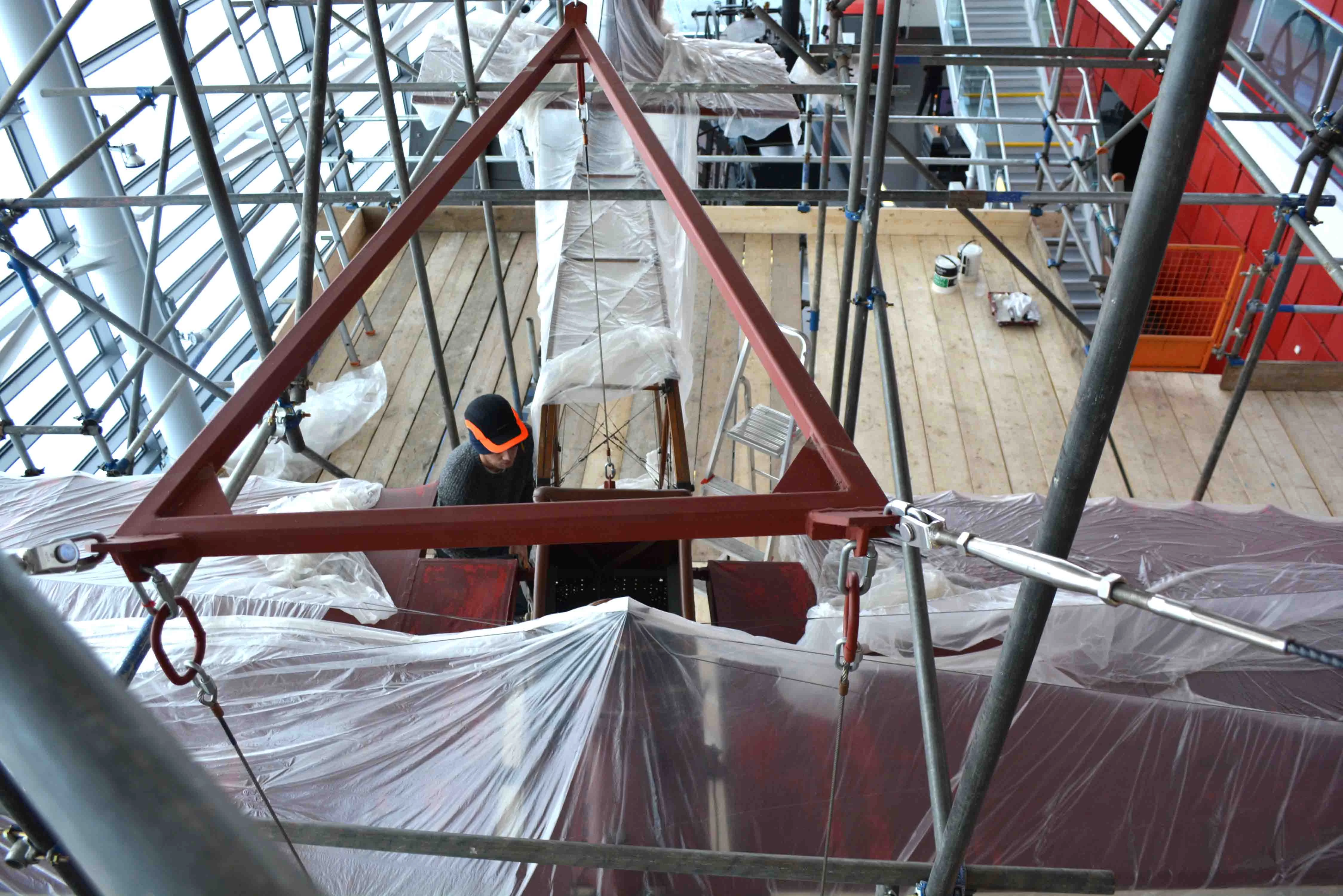Charles Horace Watkins Inventor Extraordinaire
, 5 Chwefror 2019
Charles designed, and built a monoplane around 1906, taught himself to fly and flew the plane between 1907 and 1910. Although no photographic evidence of this exists, the Charles Horace Watkins Monoplane Special, now better known as the ‘Robin Goch’ or ‘Red Robin’ has a strong claim to be the first aeroplane to fly in Wales.
Charles lived in Cardiff and his workshop can still be found a stone’s throw from Cardiff University. It was here he built the plane making use of everyday parts that he converted for his needs. For instance, a kitchen chair for the pilot’s seat; a brass domestic light switch on the dashboard; an egg timer as a navigation aid; a ball bearing in a cradle to tell if the plane was flying level and two weights dangling on string under the aircraft, one 20 feet long and one 10 feet long so he knew how far off the ground he was when landing!
In 2010 I interviewed two brothers, Michael and Sean Gomez, whose family lived next door to Mr Watkins. The brothers, who were in their 70s, remembered Charles fondly and told me many tales of what it was like in the 1950s for two young boys growing up next door to the ‘great inventor’. Here is an extract of my conversation with them.
He always had time for us and he was always trying to do something new (he would have been in his late 60s at this time). We were fascinated going there, the projects he was working on seemed totally out of this world, and quite possibly one was! He showed us a mock-up of a flying saucer he’d built. When we asked him how it would fly he replied “It’s top secret!” We couldn’t tell if he meant it or whether he was working on a secret project as the saucer seemed to work on the same principle as a hovercraft with fans providing downward thrust and other fans along the sides for direction.
He was very interested in project ‘ZETA’ – obtaining energy from water (Zero Energy Thermonuclear Reactor). He had diagrams all over his walls and said he was being consulted on this and also the Concorde project.
He was always inventing something every time we met him. During the war he came up with an idea to deflect headlights of cars down to just in front of the vehicle. This was tested by South Wales Police on behalf of the MoD.
One thing that stands out about his workshop is that he had about thirty cuckoo clocks and Westminster chiming clocks. He would faithfully wind them up every day and when it came to the hour they all went off at slightly different times! You had this cacophony of sound!
He lived with his sister who was profoundly deaf so he came up with an idea whereby if the doorbell was pushed a beam of light went all the way to the end of the hall where it reflected off various mirrors until it reached the kitchen so his sister could see it!
He invented a machine from which he made most of his money. In those days spectacle frames were made of tortoiseshell and being relatively brittle, typically they would snap just behind the hinge. So, I remember in his middle room he had hundreds of cardboard boxes containing the arms of these glasses.
He’d invented some sort of ultra-sound machine. He’d put the two arms of the specs into this tiny machine and he’d bring the nozzle down on it. The machine had lots of coils of wires and all sorts of strange things and it hummed and buzzed. And ‘hey presto’ when it came out you couldn’t see where the join was – it was seamless. Of course ultrasonic welding is quite common now for welding plastics.
He had spectacles from opticians from all over the country and he made a tremendous amount of money from it. I remember seeing a pile of white five pound notes on his table just tied up with string. It seemed to me as a boy quite a lot, but in reality was probably only a couple of thousand (pounds) still a lot of money then though. He didn’t believe in banks! I don’t think he had a bank account, he kept all his money at home.
He also had a radio, that he built himself, which could receive American radio stations. This was quite something at that time. He took it apart one day and let me have a look at it and it had about fifteen valves!
He didn’t show the monoplane to anyone, although we nagged constantly to see it. Then one day he told us if we came round on Saturday we could see it. The amazing thing was that this man had a plane in his garage when most people didn’t have cars!
He had the prop hanging up on the wall and we asked him where he got it from because at that time you couldn’t just get one from anywhere? He told us he’d carved it himself out of a piece of sapele. When we asked how he knew the shape to make it he replied “Well one just knows these things you see”
We questioned him about how he learned to fly and he said “I just taught myself. I wasn’t worried about getting it up, but I was worried about getting it back down!”
From the conversations that I had with him, I developed the opinion that the plane really did fly. If it had not I think Mr Watkins would have been more evasive with his answers and he certainly wasn’t evasive in any way.
When we asked him what he was going to do with it he said that he’d like to leave it to the nation.
“I had an American sniffing around, said he wanted to buy it. Offered me several hundred pounds for it. I told him to bugger off!”
For me Charles represents a generation filled with explorers, scientists and inventors who were making new discoveries on a daily basis. They were at the birth of an age, of which we are still a part, when people have seen massive technological changes in their lives. I do wonder sometimes where we would be without people like Charles Horace Watkins, the great inventor!
The Robyn Goch is on permanent display at the National Waterfront Museum in Swansea. Visitors can crane their necks up at the undercarriage from the floor of the ‘Large Object’ Gallery. The monoplane is suspended from the ceiling giving the impression that it is flying. A more personal view can be seen from the balcony alongside the plane.
Having the plane fixed so high up presents the museum with a number of problems. It is impossible to clean properly for one and a layer of dust can soon build up. Also, for safety reasons, the steel cables and mountings must be checked for wear and tear to ensure that the Red Robin does not come crashing down.
The cablework must be checked every five years and this gives us the chance to thoroughly clean the wings and cockpit and generally spruce things up.
To do this a framework of scaffolding is built from the floor up to the ceiling to get easy access to all of the plane. The scaffolding itself is a complex work of art put together by a very skilled team.
Once the scaffolding is in place our conservation team can get to work.






sylw - (4)
More recently I have personally designed a successful series of single and two-seat aerobatic biplanes in vintage style which are being built an flown world-wide, the prototype , which is based in Wales, is all red, like the Watkins machine!
I live in Canada now but was born in Wales and educated in England. In England for an Old Students reunion, friends now living in Glamorgan took my husband and me on a nostalgic tour of Swansea and the Gower. And, of course, we visited Robin Goch - and marvelled at the apparent fragility of the “flying machine”. I was so glad to have the more personal descriptions of Horace and his work to add to his place on our “Tree”.
Sincerely,
Janice Jones
Winnipeg, Canada
Thank you Stephen Baker for these great comments! The more I hear about Horace the more extraordinary he sounds!
Best wishes
Ian
He told me he had cast the pistons out of aluminum in old coffee cans. He also told me his income came from royalties he got from the americans for an ASDIC system he had invented before the war. He had offered it to the Brits but they wanted to classify it and not pay him a penny so he sold it to the Yanks instead. He also showed me a laser(?) system that he invented that he could focus the other side of a solid wall. He demonstrated it by burning wallpaper on the wall in the next room. He was a pacifist and wouldnt show anyone it as he foresaw it as a weapon